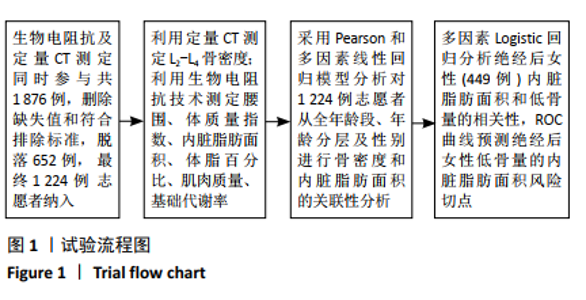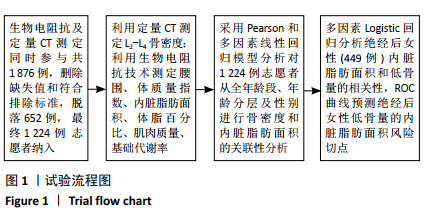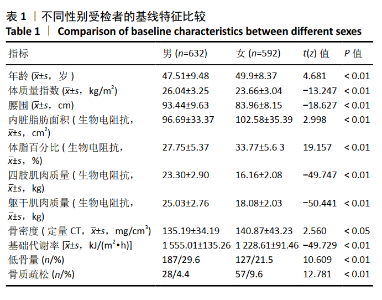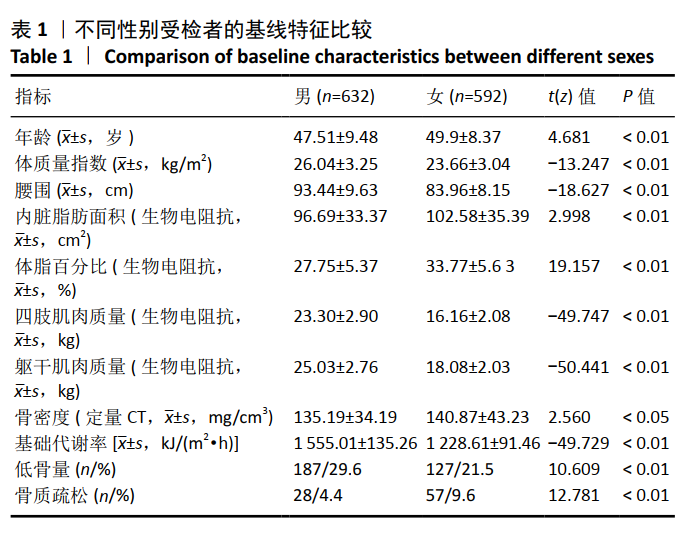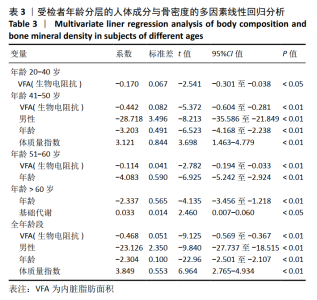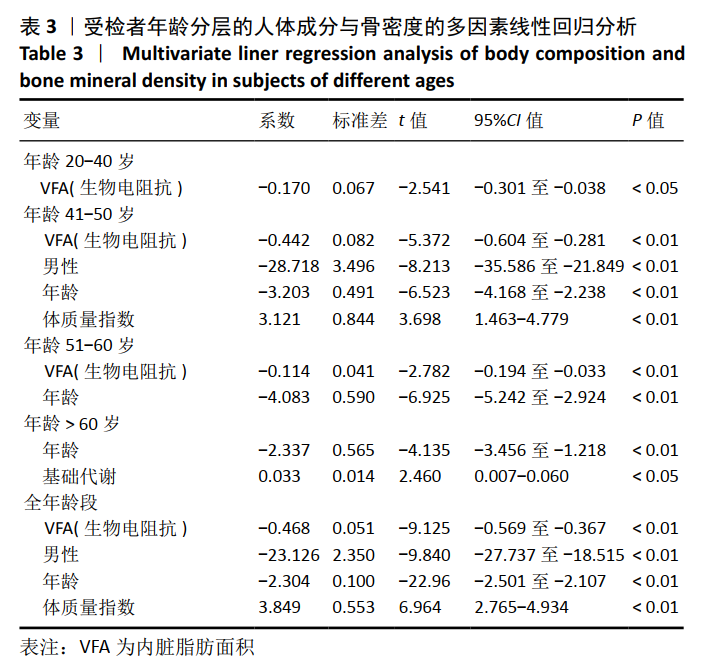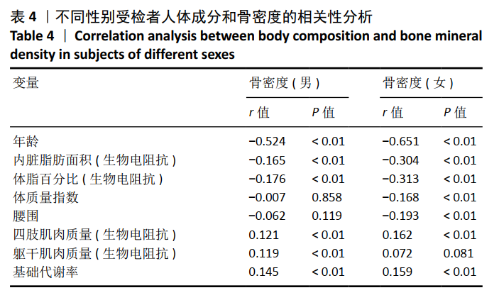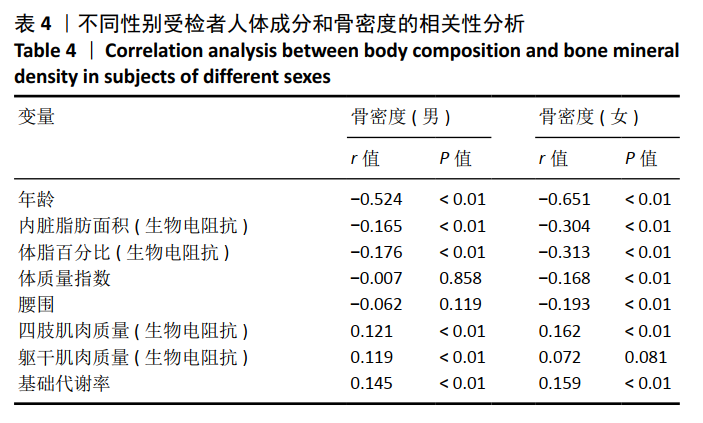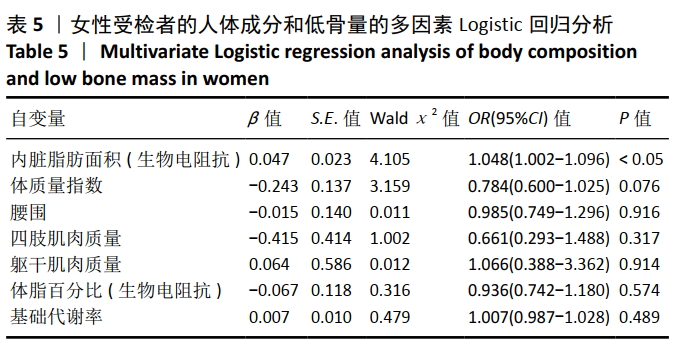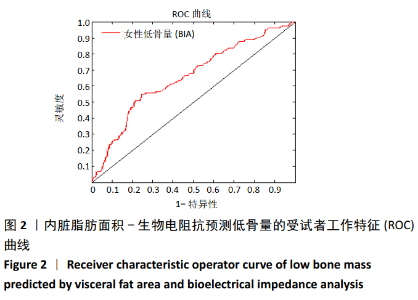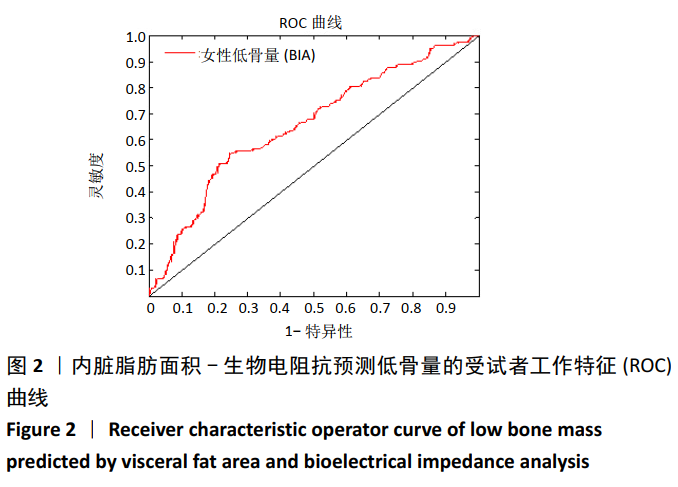[1] HOFBAUER LC, RACHNER TD. More DATA to guide sequential osteoporosis therapy. Lancet. 2015;386:1116-1118.
[2] SI L, WINZENBERG TM, JIANG Q, et al. Projection of osteoporosis-related fractures and costs in China: 2010-2050. Osteoporos Int. 2015; 26(7):1929-1937.
[3] BACHMANN KN, BRUNO AG, BREDELLA MA, et al. Vertebral strength and estimated fracture risk across the BMI spectrum in women. J Bone Miner Res. 2016;31(2):281-288.
[4] 张恬,顾一航.腹型肥胖对正常体质指数老年人发生肌少症及骨质疏松的影响[J].中国临床医学,2019,26(5):754-758.
[5] 尹肖寒,陶萄,侯丹平,等.人体成分与骨密度的相关性研究[J]. 系统医学,2018,3(17):1-4.
[6] 张晓东,赵文吉,陈焱君,等.腹部脂肪及年龄对女性腰椎骨质密度影响协同作用分析[J].中国医学影像学杂志,2016,24(11): 843-846.
[7] 刘正华,张玉婷,孔江涛,等.年龄分层在女性腰椎骨密度与肥胖相关研究中的必要性[J].实用放射学杂志,2020,36(2):259-262.
[8] 蒋耀军,吴艳,张永高,等.低管电流联合多模型迭代重建技术对腰椎定量CT准确度的应用价值[J].中华放射医学与防护杂志, 2018,38(1):59-63.
[9] 程晓光,王亮,曾强,等.中国定量CT(QCT)骨质疏松症诊断指南(2018)[J].中国骨质疏松杂志,2019,25(6):733-737.
[10] 程晓光,李娜.美国放射学院(ACR)关于定量CT(QCT)骨密度测量操作指南[J].中国骨质疏松杂志,2013,19(9):991-997.
[11] ZENG Q, LI N, WANG Q, et al. The prevalence of osteoporosis in China, a nationwide, multicenter DXA survey. J Bone Miner Res. 2019;34(10): 1789-1797.
[12] 何培亮,李爱国,彭涛,等.中国南方与北方地区2013-2018年骨质疏松流行病学对比分析[J]. 中华老年病研究电子杂志,2020, 7(1):31-35.
[13] 刘正华,张玉婷,常荣,等.青年女性腰椎骨密度与体脂分布的相关性[J]. 中国骨质疏松杂志,2019,25(9):1290-1292.
[14] SHAYGANFAR A, EBRAHIMIAN S, MASJEDI M, et al. A study on bone mass density using dual energy X-ray absorptiometry: does high body mass index have protective effect on bone density in obese patients? J Res Med Sci. 2020;25:4.
[15] 谭凡,王静,裴之俊,等.围绝经期妇女骨折风险与内脏脂肪量的相关性研究[J]. 中国骨质疏松杂志,2020,26(5): 659-662.
[16] 邵珠林,杨杭妹,徐向进,等. 沙格列汀与二甲双胍单药治疗对初发 2 型糖尿病患者骨代谢及体脂分布的影响[J]. 中华糖尿病杂志, 2019,11(2):114-119.
[17] LU H, FU X, MA X, et al. Relationships of percent body fat and percent trunk fat with bone mineral density among Chinese, black, and white subjects. Osteoporos Int. 2011;22:3029-3035.
[18] PAPADAKIS G, GONZALEZ ER, MARQUES-VIDAL P, et al. Menopausal hormone therapy. Effects on bone and body composition. Revue Med Suisse. 2019;15(647):836-839.
[19] PAPADAKIS GE, LAMY O. Effects of menopausal hormone therapy on bone and body composition. Osteologie. 2019;28(2):122-130.
[20] ZOPFS D, THEURICH S, HOKAMP NG, et al. Single-slice CT measurements allow for accurate assessment of sarcopenia and body composition. Eur Radiol. 2020;30(3):1701-1708.
[21] ZHU K , BRIFFA K , SMITH A , et al. Gender differences in the relationships between lean body mass, fat mass and peak bone mass in young adults. Osteoporosis Int. 2014;25(5):1563-1570.
[22] LIN X. Research progress in the mechanism of polysaccharide in relieving type 2 diabetes. AIP Conf Proc. 2019;2058(1):020010.
[23] HSU YH, VENNERS SA, TERWEDOW HA, et al. Relation of body composition, fat mass, and serum lipids to osteoporotic fractures and bone mineral density in Chinese men and women. Am J Clin Nutr. 2006; 83(1):146-154.
[24] 梁敏,廖二元.体重、体重指数对健康绝经后妇女骨密度的影响[J].中国老年学杂志,2006,26(1):28-30.
[25] 中华医学会糖尿病学分会代谢综合征研究协作组.中华医学会糖尿病学分会关于代谢综合征的建议[J].中华糖尿病杂志,2004,12(3): 156-161.
[26] LEE DH, PARK KS, AHN S, et al. Comparison of abdominal visceral adipose tissue area measured by computed tomography with that estimated by bioelectrical impedance analysis method in Korean subjects. Nutrients. 2015;7(12):10513-10524.
[27] 梁冬波,李林青,唐福宇,等.脂肪细胞因子与老年骨密度的相关性[J].中国矫形外科杂志,2019,27(12):1128-1131.
[28] 王诗琦.长期慢性低度炎症状态下骨髓脂肪的沉积对骨代谢的影响及其机制研究[D].武汉:华中科技大学,2017.
[29] HO-PHAM LT, TRAN B, DO AT, et al. Association between pre-diabetes, type 2 diabetes and trabecular bone score: the Vietnam osteoporosis study. Diabetes Res Clin Pr. 2019;155:107790.
[30] 王盼,吴科锋,崔燎.不同阶段2型糖尿病诱发骨质疏松症的致病机制研究进展[J]. 中国骨质疏松杂志,2020,26(4):157-162. |
